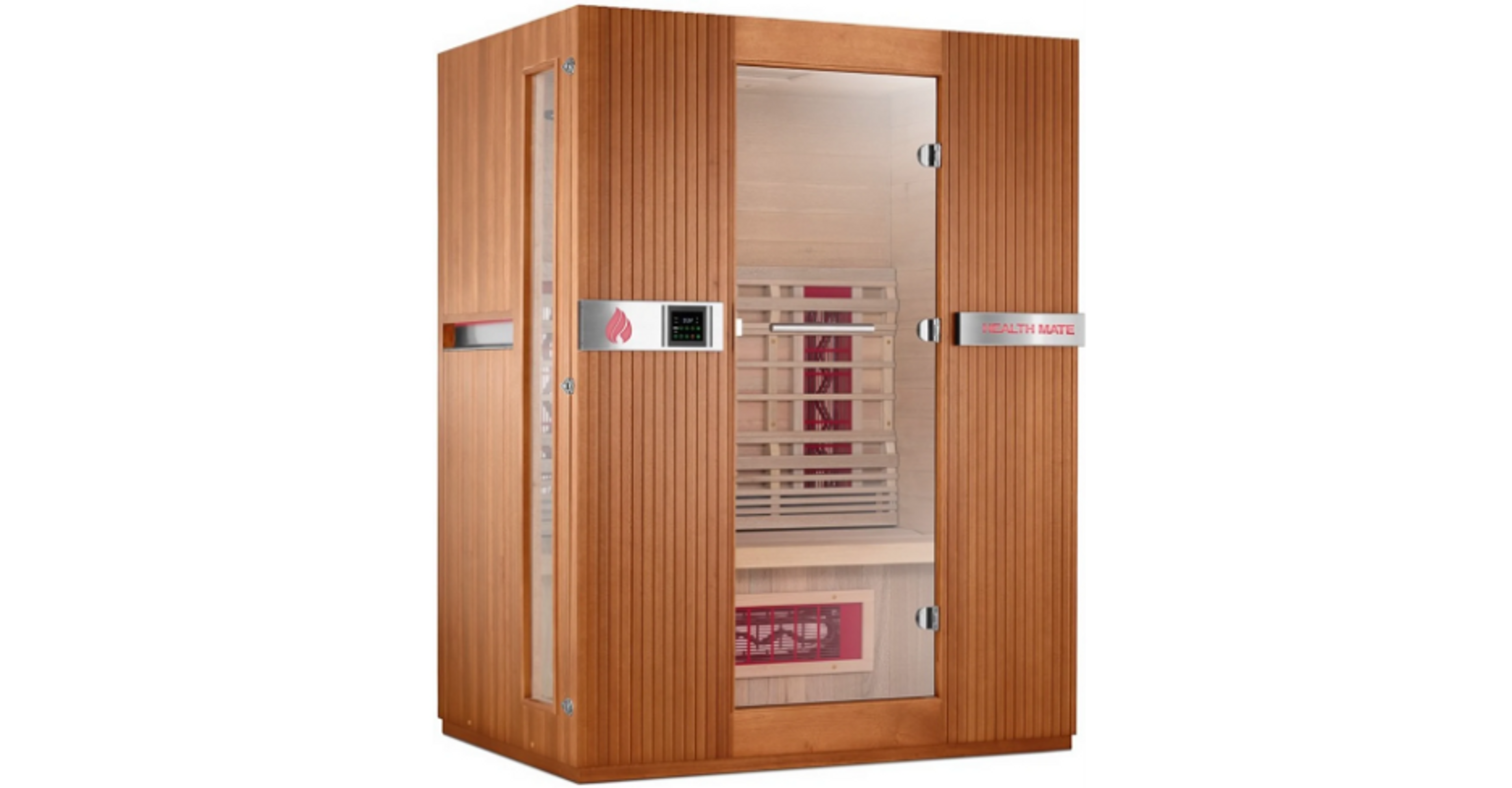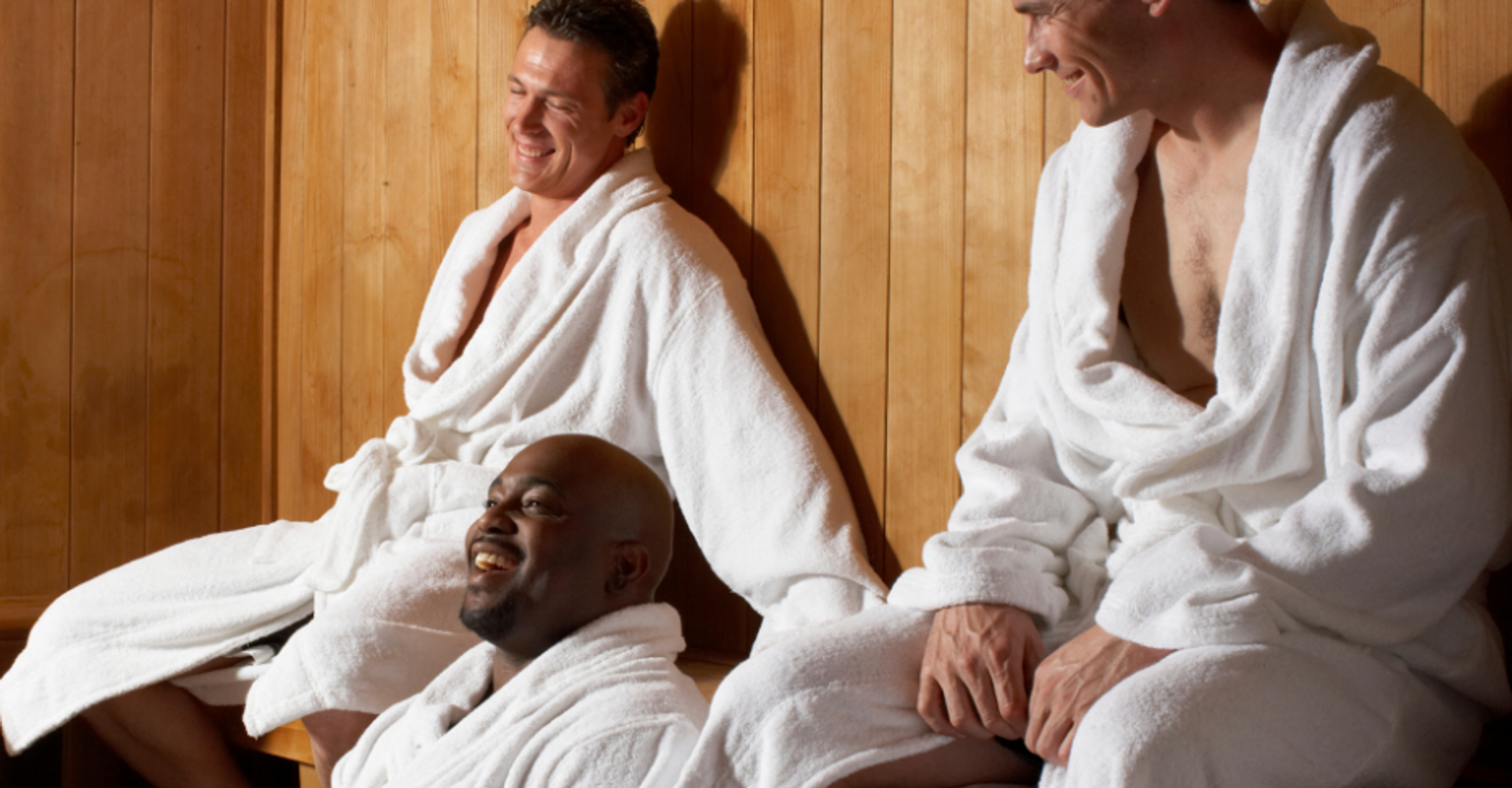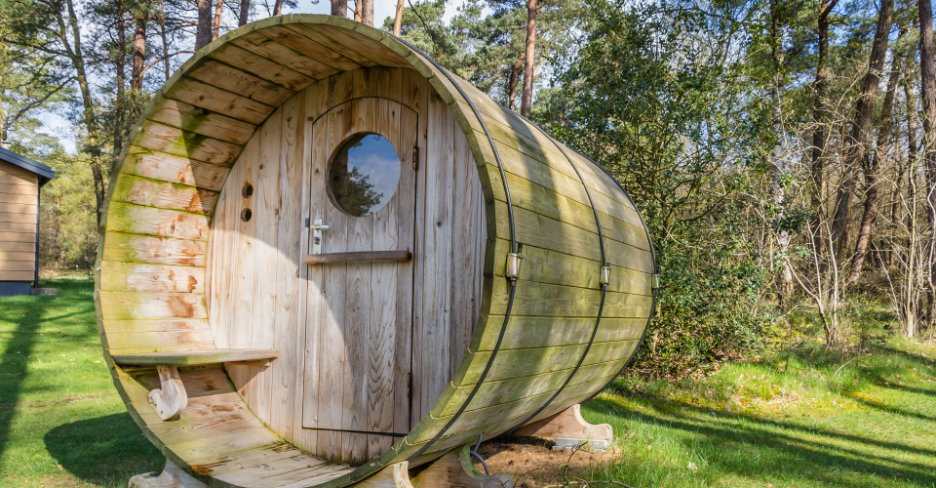Ever paused amid a steamy, stress-melting sauna session to wonder about its origins? You’re not alone.
We’ve all heard whispers about ancient Greeks loving a good sweatout. But did you know that this love traveled north and rooted itself deep into Finnish society?
The humble sauna has evolved from being just an age-old health practice to becoming a symbol of wellness and social interaction across the globe. Today’s outdoor saunas marry tradition with modern design elements and eco-friendly construction techniques – all thanks to technology!
Sounds intriguing, right? Well, hold on tight, because we’re diving headfirst into this fascinating world of global outdoor saunas! Get ready for some surprising facts, cool insights, and more, but hey no spoilers yet!
The Origin and Evolution of Sauna Culture
Saunas have been part of human culture for thousands of years, starting with the Ancient Greeks. The Greeks were known to use hot air baths, an early form of sauna that they believed promoted health and well-being.
Ancient Greek Influence on Sauna Culture
The Ancient Greeks played a crucial role in initiating the sauna tradition. They called these spaces “laconica,” named after Laconia, the region where Sparta is located. Over time, this practice spread throughout their empire.
Influenced by Greek traditions, the Romans later developed thermae – large bath complexes that included steam rooms similar to saunas. These structures allowed people to enjoy social gatherings while benefiting from heat therapy.
The Deep Significance of Sauna in Finland
However, it was in Finland that saunas became truly ingrained in everyday life. Here, they weren’t just seen as places for cleansing but also for spiritual healing. Finnish lore speaks about löyly, or sauna steam, which was thought to contain spirits.
Taking inspiration from earlier cultures like Greece and Rome but adding unique touches like wood-fired stoves led Finns to create what we now know as modern saunas. Sauna culture has since spread globally, with each region adding its own flavor to the tradition.
Health Benefits of Regular Sauna Use
The magic behind sauna doors is more than just sweat and heat. Stepping into a sauna causes numerous physiological changes that can improve health. If you want to check out some good sauna options, visit Komowa.com for in-depth articles about the health benefits of sauna.
Physical Advantages of Sauna Sessions
Saunas are like a workout for your cardiovascular system. As you relax in the warm room, your heart rate increases, and your blood vessels widen. This helps improve circulation by delivering oxygen-rich blood to tired muscles.
Beyond enhanced circulation, saunas can also provide detoxification benefits. The intense sweating induced by high temperatures helps flush out toxins from the body—almost like giving yourself an internal shower.
Mental and Emotional Wellness through Saunas
Apart from physical advantages, there’s a psychological angle too. Letting go of daily stressors while basking in soothing warmth offers respite for mental fatigue. It allows for deep relaxation, which promotes better sleep patterns.
Another surprising benefit? A regular dip in the hot tub could help lift spirits. According to studies published in Harvard Health Blog, repeated exposure to heat via sauna use can have positive effects on mood disorders, making it a potent tool against anxiety or depression.
These findings show that saunas do more than provide comfort – they pave the way towards optimal well-being.
Traditional vs. Modern Outdoor Sauna Designs
Outdoor saunas have come a long way from their traditional origins, with modern designs now marrying convenience and style. Traditional outdoor saunas often use wood-fired heaters, allowing for a more rustic and authentic experience.
The charm of these traditional designs lies in their use of specific materials, like cedarwood, known for its longevity and aroma, which contributes to the overall sauna experience. Cedarwood Benefits. But there’s something special about stoking your fire; it adds an element of ritual to the process.
The Evolution Toward Modernity

In contrast, modern outdoor saunas favor minimalism and eco-friendliness. These contemporary designs use electric or infrared heaters, offering ease of use while reducing carbon footprints. Infrared vs. Traditional Sauna
An intriguing aspect is how seamlessly they blend into any backyard setting due to their sleek design elements. You might even mistake them for high-end art installations.
A Blend of Tradition and Innovation?
If you’re torn between tradition and innovation – fear not. Some brands give you the best of both worlds by integrating cutting-edge technology into classic sauna layouts.
Eco-friendly wood choices? Check.
User-friendly digital controls? Yes indeed.
Sophisticated aesthetics without compromising functionality? Absolutely.
This hybrid approach ensures everyone can find an outdoor sauna that fits perfectly with personal preferences.
Whether it’s nostalgia for traditional practices or an inclination towards modernity, outdoor saunas have designs that cater to every taste.
Technological Advancements in Sauna Construction
The rise of technology has given a significant boost to the way we construct saunas. From more efficient heating systems to eco-friendly materials, there’s plenty that has changed.
Let’s start with infrared sauna technology. Unlike traditional methods, these advanced systems useinfrared light waves, which directly heat your body instead of the surrounding air. This means quicker warm-up times and lower energy costs – a win-win for everyone.
But what about those who still prefer traditional wood-fired saunas? Fear not. Technological advancements have led to smarter design principles that optimize fuel efficiency while ensuring an even distribution of heat throughout the sauna space.
Eco-Friendly Materials: The Green Shift
Sustainability is becoming increasingly important in all aspects of life, including our pursuit of relaxation and well-being through saunas. Many modern outdoor saunas now make use of sustainable building materials such as recycled or reclaimed timber.
This green shift doesn’t stop at construction either; many companies are also incorporating energy-efficient heaters and LED lighting into their designs.
Digital Integration: Sauna Meets Smart Home
Last but not least on our tour through tech-enhanced sauna construction is digital integration. Nowadays, you can control temperature settings from your smartphone or set up automated cleaning schedules, making it easier than ever to keep your sauna in tip-top shape.
As you can see, the technological evolution in sauna construction is all about making our lives easier while providing an optimal experience. No longer is it only about the heat; a comprehensive strategy has been adopted that takes into account eco-friendliness, proficiency, and convenience.
Saunas as Social Gathering Spots

Traditionally, saunas have served as more than just a place for bathing or health therapy. In many cultures, there’ve been social gathering spots where people come together to unwind and share stories.
The Finnish sauna tradition, for example, is deeply embedded in their society. From discussing important matters to simply catching up with friends – the sauna plays an integral role.
In Japan too, the concept of public baths, or ‘onsen’, has similar communal elements. They are places where people gather not only to cleanse but also to connect on a deeper level. Key Stat: 80% of Japanese households use these facilities regularly.
The Influence of Sauna Culture Globally
Globally speaking, this trend of using saunas as social hubs isn’t restricted to any one region. It’s something we see replicated across various parts of the world, like Russia with their ‘banya’, Turkey’s hamams, and Native American sweat lodges.
This shared experience fosters community bonding and promotes well-being because, let’s face it, there’s nothing quite like sharing stories over warm steam.
Cultural Adaptations and Etiquette in Sauna Use
As saunas have spread around the world, each culture has added its own unique touch to this age-old practice. Let’s take a trip around the world and see how different cultures embrace sauna use.
The Japanese Sento Culture
In Japan, public bathhouses known as sento are prevalent. They offer more than just cleansing; they’re social hubs where generations come together to relax and connect.
Finnish Sauna Rituals
Moving over to Finland, home of traditional saunas, these heated rooms are seen as sacred spaces for both physical purification and spiritual relaxation. An important part of Finnish etiquette is löyly—throwing water on hot stones for steam generation, which elevates the experience.
Russian Banya Practices
Russia gives us banyas: steam baths with high humidity levels that feature an invigorating ritual involving veniks – bundles of leafy branches used in gentle flagellation to stimulate blood circulation.
American Trends in Outdoor Saunas
The love for outdoor saunas has crossed oceans into America too. However, American usage leans more towards individual health and wellness, with an increasing trend of private outdoor saunas in homes.
So there you have it. From the social sentos of Japan to the relaxing banyas of Russia, sauna culture varies widely around the world but always fosters a sense of community and well-being.
Conclusion
The global love of outdoor saunas is no mere trend; it’s a testament to the blend of tradition and innovation. This journey from ancient Greece to modern Finland proves that.
Saunas aren’t just about getting sweaty. They’re a holistic health experience with both physical and mental benefits, backed by science.
The transformation in design over time showcases our ability to balance heritage with eco-friendly advancements. Technology has truly changed the game for sauna construction!
Let’s not forget how these steamy havens foster community spirit worldwide, while each culture adds its unique spin on rituals and etiquette.
To sum up: It’s more than heat—it’s history, health, harmony, and humanity all packed into one hot room! Sauna on!


Comments are closed.